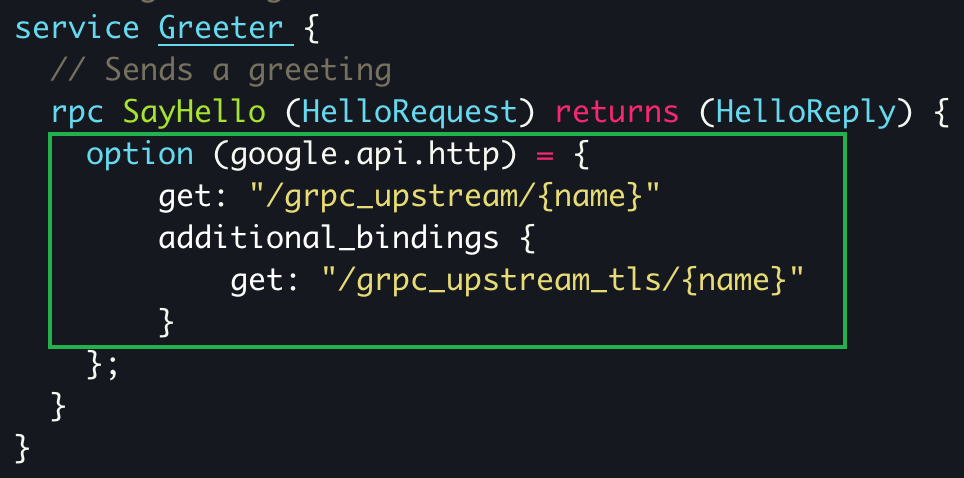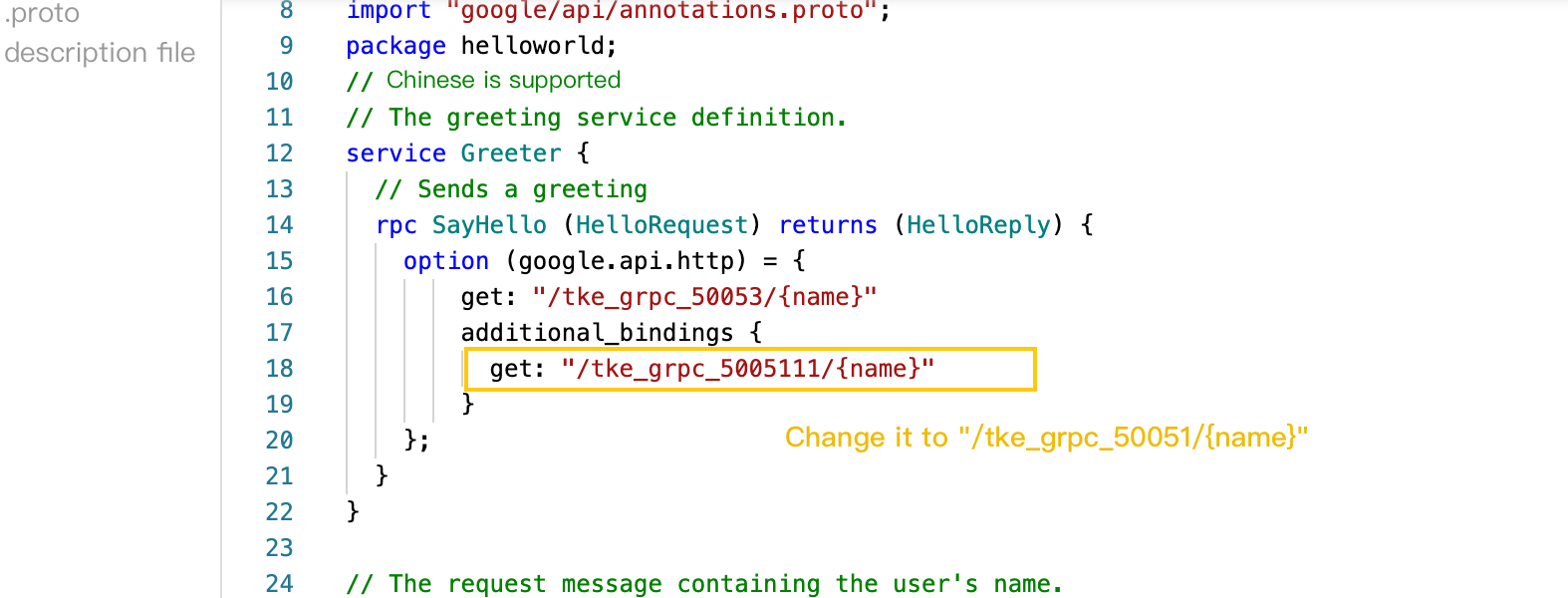- Release Notes and Announcements
- Product Introduction
- Purchase Guide
- Getting Started
- Operation Guide
- Instance Management
- Service Management
- Creating API
- API Creation Overview
- Creating APIs Connecting to the Public URL/IP Backend
- Creating APIs Connecting to the VPC Resource Backend
- Creating APIs Connecting to the SCF Backend
- Creating API for Interconnecting Backend with COS
- Creating APIs Connecting to the Mock Backend
- Creating APIs Connecting to the TSF Backend
- Importing APIs
- API Management
- Calling API
- Release and Access
- Custom Domain Name and Certificate
- Usage Plan
- Backend Upstream
- Verification and Security
- Log Statistics
- Access Monitoring
- API Doc Generator
- Application Management
- Permission Management
- Precautions
- Private IP Ranges and Public VIPs of API Gateway Regions
- Plugin Usage
- Best Practices
- Making Serverless Service Available quickly through API Gateway
- Integrating WAF to API Gateway for Security Protection
- Accessing Resources in IDC via API Gateway Dedicated Instance
- Quick Access to TEM Application via API Gateway
- Integrating ECDN to API Gateway for Acceleration
- API Gateway Providing the Access Capability for TKE
- Migrating from Region A to Region B
- Development Guide
- API Documentation
- Legacy Features
- FAQs
- Service Level Agreement
- Contact Us
- Glossary
- Release Notes and Announcements
- Product Introduction
- Purchase Guide
- Getting Started
- Operation Guide
- Instance Management
- Service Management
- Creating API
- API Creation Overview
- Creating APIs Connecting to the Public URL/IP Backend
- Creating APIs Connecting to the VPC Resource Backend
- Creating APIs Connecting to the SCF Backend
- Creating API for Interconnecting Backend with COS
- Creating APIs Connecting to the Mock Backend
- Creating APIs Connecting to the TSF Backend
- Importing APIs
- API Management
- Calling API
- Release and Access
- Custom Domain Name and Certificate
- Usage Plan
- Backend Upstream
- Verification and Security
- Log Statistics
- Access Monitoring
- API Doc Generator
- Application Management
- Permission Management
- Precautions
- Private IP Ranges and Public VIPs of API Gateway Regions
- Plugin Usage
- Best Practices
- Making Serverless Service Available quickly through API Gateway
- Integrating WAF to API Gateway for Security Protection
- Accessing Resources in IDC via API Gateway Dedicated Instance
- Quick Access to TEM Application via API Gateway
- Integrating ECDN to API Gateway for Acceleration
- API Gateway Providing the Access Capability for TKE
- Migrating from Region A to Region B
- Development Guide
- API Documentation
- Legacy Features
- FAQs
- Service Level Agreement
- Contact Us
- Glossary
Backend gRPC Plugin HttpRule
Last updated: 2022-07-08 18:06:54
This document is currently invalid. Please refer to the documentation page of the product.
Overview
The gRPC plugin requires you to provide a .proto file to describe the rule for converting HTTP into gRPC. HttpRule is the syntax of the conversion rule.
Prerequisites
The HTTP request body can be in JSON format only, and the request method can be RESTful only. The relationships between supported HTTP methods and CRUD operations are as listed below:
| Supported HTTP Method | Corresponding CURD |
|---|---|
| POST | Create |
| GET | Read |
| PUT | Update/Replace |
| PATCH | Update/Modify |
| DELETE | Delete |
The following protocols are supported by the backend:
- gRPC
- gRPCS
The following types are supported by the backend:
- Backend upstream (both VPC upstreams and TKE upstreams are supported)
- Private network CLB
- Public network URL backend
How It Works
HttpRule defines the mapping relationship between HTTP and gRPC in two dimensions:
- Where are parameters values in the RPC method of gRPC obtained?
- How is the data returned in the HTTP response in the RPC method of gRPC?
In the RPC method definition, you can add option (google.api.http) as the HttpRule mapping syntax.
Note:
- In
HttpRule, the HTTP method needs to be in lowercase, and an RPC method corresponds to an HTTP request.- There is only one method, unless you use
addtional_bindings. For the usage methods and use cases ofaddtional_bindings, see below.
Below is a sample .proto file with the HttpRule rule:
syntax = "proto3";
option go_package = "google.golang.org/grpc/examples/helloworld/helloworld";
option java_multiple_files = true;
option java_package = "io.grpc.examples.helloworld";
option java_outer_classname = "HelloWorldProto";
import "google/api/annotations.proto";
package helloworld;
// Chinese remarks are supported
// The greeting service definition.
service Greeter {
// Sends a greeting
rpc SayHello (HelloRequest) returns (HelloReply) {
option (google.api.http) = {
get: "/grpc_upstream/{name}"
additional_bindings {
get: "/grpc_upstream_tls/{name}"
}
};
}
}
// The request message containing the user's name.
message HelloRequest {
string name = 1;
}
// The response message containing the greetings
message HelloReply {
string message = 1;
}Note:You must import the relevant
HttpRulesyntax: import "google/api/annotations.proto". In addition to theHttpRule, all other syntaxes are the same as those of the gRPC service. Therefore, you only need to add theHttpRuleto the original.protofile of the gRPC service.
Checking the validity of .proto file syntax locally
If the uploaded .proto file has problems, you can use the protoc tool to check the file as follows:
- Download googleapis.tar.gz.
- Decompress
googleapis.tar.gzto any directory such as/tmp. - Set the environment variable
GOOGLEAPIS_DIR:GOOGLEAPIS_DIR=/tmp/googleapis. - Use the protoc tool to verify the validity of the
.protofile. The file is valid if there are no errors and warnings.protoc --include_imports --include_source_info --proto_path=${GOOGLEAPIS_DIR} --proto_path=. --descriptor_set_out=api_descriptor.pb ex ample.proto
Request parameter mapping rules
- If the definition of the body in
HttpRuleis a specific value (not *): - For parameters defined in the path template, get them from the path in the request URL.
- For parameters defined in the body, get them from the request body.
- For other parameters, get them from the query parameters in the request URL.
- If the body in
HttpRuleis *: - All parameters cannot be obtained from the query parameters in the request URL.
- Parameters can be obtained only from the body or URL path.
- If the body in
HttpRuleis undefined: - Parameters are obtained from the query parameters in the request URL by default.
- If it is defined that parameters are obtained from the URL path, they will be obtained from the URL path according to the path template rule.
Use cases
- Take getting parameters of a GET request as an example (parameters are obtained from the query parameters by default unless otherwise specified in the path template):
service Messaging {
rpc GetMessage(GetMessageRequest) returns (Message) {
option (google.api.http) = {
get:"/v1/messages/{message_id}"
};
}
}
message GetMessageRequest {
message SubMessage {
string subfield = 1;
}
string message_id = 1; // Mapped to URL path.
int64 revision = 2; // Mapped to URL query parameter `revision`.
SubMessage sub = 3; // Mapped to URL query parameter `sub.subfield`.
}message_idinGetMessageRequestis obtained from the URL path, and other parameters, such asrevisionandsubfieldinsub, are obtained from the query parameters of the URL.{message_id}in "/v1/messages/{message_id}" is the path template. The parameter specifyingmessage_idis obtained from the URL path.- For the HTTP request URL
/v1/messages/123456?revision=2&sub.subfield=foo, the corresponding gRPC request isGetMessage(message_id: "123456" revision: 2 sub: SubMessage(subfield:"foo")).
- PATCH request parameters are obtained from the URL path and body. Note that if the body is *, you cannot get parameters from the query parameters of the request.
service Messaging {
rpc UpdateMessage(Message) returns (Message) {
option (google.api.http) = {
patch: "/v1/messages/{message_id}"
body: "*"
};
}
}
message Message {
string message_id = 1;
string text = 2;
}- The request parameter
message_idis obtained from the URL path of the request, while other parameters such astextare obtained from the body. Note that if the body is \*, parameters won't be obtained from the query parameters of the request. - For the HTTP request
PATCH /v1/messages/123456 { "text": "Hi!" }, the corresponding gRPC request isUpdateMessage(message_id: "123456" text: "Hi!").
- The request parameter
- If the body is not *:For the HTTP request
service Messaging {
rpc UpdateMessage(UpdateMessageRequest) returns (Message) {
option (google.api.http) = {
patch: "/v1/messages/{message_id}"
body: "message"
};
}
}
message UpdateMessageRequest {
string message_id = 1; // mapped to the URL
Message message = 2; // mapped to the body
}
message Message {
string text = 1; // The resource content.
}PATCH /v1/messages/123456 { "text": "Hi!" }, the corresponding gRPC request isUpdateMessage(message_id: "123456" text: "Hi!"). - Use cases of
additional_bindings:additional_bindingsis used for API compatibility or exposure of two HTTP requests with the same RPC method.In this way, two HTTP requests use the same RPC method, and the request mappings are as detailed below:service Messaging {
rpc GetMessage(GetMessageRequest) returns (Message) {
option (google.api.http) = {
get: "/v1/messages/{message_id}"
additional_bindings {
get: "/v1/users/{user_id}/messages/{message_id}"
}
};
}
}
message GetMessageRequest {
string message_id = 1;
string user_id = 2;
}- For the HTTP request
GET /v1/messages/123456, the corresponding gRPC request isGetMessage(message_id: "123456"). - For the HTTP request
GET /v1/users/me/messages/123456, the corresponding gRPC request isGetMessage(message_id: "123456").
- For the HTTP request
Note:For the detailed
HttpRule, see http.proto.
Notes
Only one .proto file can be uploaded for a gRPC backend plugin. Therefore, you need to place all RPC methods that need to be exposed into the same .proto file and add HttpRule.
FAQs
The error message "The proto file format error parameter format is incorrect. Modify it and perform the operation again" is reported when I save the gRPC plugin. What should I do?
The submitted .proto file is in an incorrect format. This may be because HttpRule isn't imported. In this case, you need to add import "google/api/annotations.proto" to the .proto file.
The error message "Api with grpc(s) backend needs GrpcGateway plugin be configured" is reported when I access a service provided by API Gateway. What should I do?
Solution: Bind the gRPC backend plugin to this API.
Example of successful access after modification:
The error message "failed to transcode .proto file Unknown path "/something"" is reported when I access a service provided by API Gateway. What should I do?
Solution: The path defined in option in HttpRule in the .proto file is different from the one you accessed. Check the .proto file and modify the paths to the same value.
Solution example:
Example of successful access after modification:

 Yes
Yes
 No
No
Was this page helpful?